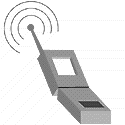

It would be an understatement to call todayís mobile phone mar-ket volatile; it seems as if a new technology battles its way into the market every day. As a leading service provider, Vodac recognizes the dynamics involved in meeting customer needs and sees its role of supporting its growing network of phone dealers as crucial to staying at the forefront of the market. As a key player in the communications business, streamlining its own internal and external communication links is critical.
Vodac is a subsidiary of the Vodafone Group, the U.K. market leader in mobile communications that has over 2.8 million subscribers. Vodafone has been operating in the United Kingdom since 1985, when the company launched the United Kingdomís first cellular telephone network. Vodac was created to handle Vodafoneís sales operation. In addition to a national direct sales force operating from nine regional offices, Vodac has an extensive network of independent dealers across the United Kingdom and a specialist chain of Vodastore Communication Centres.
Part of Vodacís mission is to make sure that phone dealers have all the information they need to provide quick and courteous service to their customers. A clean and efficient transfer of the user details from the dealer to the service provider is imperative in order to service the customer well after the initial sell.
This flow of information seems like a simple transaction, but Vodac was faced with a dealer network that used a wide variety of desktop platforms, with devices of varying specifications. Implementing a common computing system to deploy mission-critical applications and information was challenging. Vodacís challenge was further fueled by the pace of the market it serves. In addition, the mobile phone market tends to experience a large turnover of resellers and is made up of small businesses that donít have the resources to buy expensive, state-of-the-art computer hardware.
Vodac wanted to connect phone dealers across the United Kingdom to its own computer system, leveraging the existing systems at its dealer locations. Connections had to be simple and easy to use. To achieve these goals, Vodac used a thin-client/server solution built on the WinFrame server.
Since implementing this solution, dealer access to mission-critical applications has increased 500 percent. Vodac has maximized its return on investment and has centralized its application deployment and management.
Presenting problem Vodac sought an easy, economical solution that would allow its network of phone dealers to access mission-critical applications for forwarding customer information requisite to connecting phone service. Since the phone dealers were supplying their own computer systems, the sheer diversity of the client base only exacerbated Vodacís search for a single application-deployment solution.
The challenge: Deploy applications to resellers who have diverse computer systems.
Originally, Vodacís dealer system ran on a mainframe provided by a service bureau. At the other end, the dealers had a terminal-emulation system running on a PC. Although the system was reasonably stable, Vodac experienced gateway problems that affected the serviceís reliability. And because of the complexity and size of the investment involved to set it up, the system didnít have many users. At the time the system was replaced, very few dealers were connected.
Vodac decided to run a new system in-house and selected Gemini, a customer administration and billing system. The company believed that the Gemini system would give it a competitive edge because this system offered more flexible billing, quicker connection, and much better service to customers. The Gemini system deals with the entire customer life cycle, performing the credit vetting, taking the name and address details of customers, and effecting the connection of the new phone to the network.
Having downsized from its mainframe system, Vodac faced the challenge of deploying mission-critical applications to its geographically dispersed dealer network across the United Kingdom while keeping total cost of ownership low and application and user support manageable. The company still needed a cost-effective solution that would be easy to implement. With the advent of Gemini, the PC client running at the dealer end required a powerful PC on which to run. The IS department was concerned about the problems of putting higher specification machines out with dealers and of maintaining both the software and the machines. So Vodac began investigating other ways of getting the Gemini PC client out to the dealers.
Hardware and software Vodacís thin-client/server networking environment includes:
Vodac deploys a customer administration and billing system to its network of dealers.
Vodac uses the WinFrame server to deploy the mission-critical Gemini customer administration and billing system to its phone dealer network across the United Kingdom. Dealers connect to the server via leased lines, ISDN, and V.34 dial-up connections.
Solution and results Vodac initially piloted a thin-client/server solution using the WinFrame server. During the pilot phase, Vodac found that this solution proved flexible and scalable and that it could be launched to a limited number of existing dealers inexpensively. It was also easy to set up.
Vodacís solution significantly increased the number of dealers that were able to connect to the system.
WinFrameís thin-client/server approach to enterprise computing enabled Vodacís dealers to use any PC they wanted on the desktop, as long as the PC could handle the native systemís graphics (in effect, running a minimum of VGA graphics). The dealers could use whatever machines they had on hand, including machines running Windows NT, Windows 95, Windows 3.x, MS-DOS, UNIX, or the Macintosh OS.
Since going live, the number of Vodac dealers connected via WinFrame has increased by almost 500 percent. They have spread out too: there are now dealers on line as far north as Glasgow, Scotland, and as far south as southern England. More dealers come on line as they are brought on board.